-
 Bitcoin
Bitcoin $78,311.0860
-4.96% -
 Ethereum
Ethereum $1,554.1389
-11.52% -
 Tether USDt
Tether USDt $0.9994
-0.01% -
 XRP
XRP $1.8690
-9.69% -
 BNB
BNB $553.2270
-4.73% -
 USDC
USDC $0.9999
0.00% -
 Solana
Solana $106.1287
-7.45% -
 Dogecoin
Dogecoin $0.1469
-8.94% -
 TRON
TRON $0.2271
-5.15% -
 Cardano
Cardano $0.5723
-8.25% -
 UNUS SED LEO
UNUS SED LEO $8.9644
-0.63% -
 Toncoin
Toncoin $3.0468
-7.40% -
 Chainlink
Chainlink $11.2739
-7.40% -
 Stellar
Stellar $0.2297
-7.44% -
 Avalanche
Avalanche $16.2885
-4.13% -
 Shiba Inu
Shiba Inu $0.0...01126
-4.87% -
 Sui
Sui $1.9914
-4.47% -
 Hedera
Hedera $0.1438
-6.57% -
 MANTRA
MANTRA $6.2867
1.46% -
 Polkadot
Polkadot $3.5764
-7.71% -
 Bitcoin Cash
Bitcoin Cash $272.7745
-6.40% -
 Dai
Dai $0.9998
-0.02% -
 Litecoin
Litecoin $70.1706
-10.92% -
 Ethena USDe
Ethena USDe $0.9986
-0.04% -
 Bitget Token
Bitget Token $4.0702
-6.45% -
 Pi
Pi $0.5891
-5.30% -
 Hyperliquid
Hyperliquid $10.8343
-2.83% -
 Monero
Monero $195.2009
-7.56% -
 Uniswap
Uniswap $5.1005
-8.71% -
 OKB
OKB $50.7194
-5.53%
What is halving and its impact?
Bitcoin's halving, occurring every 4 years, reduces mining rewards, impacting miners' profitability and contributing to the cryptocurrency's deflationary nature.
Apr 07, 2025 at 05:28 pm
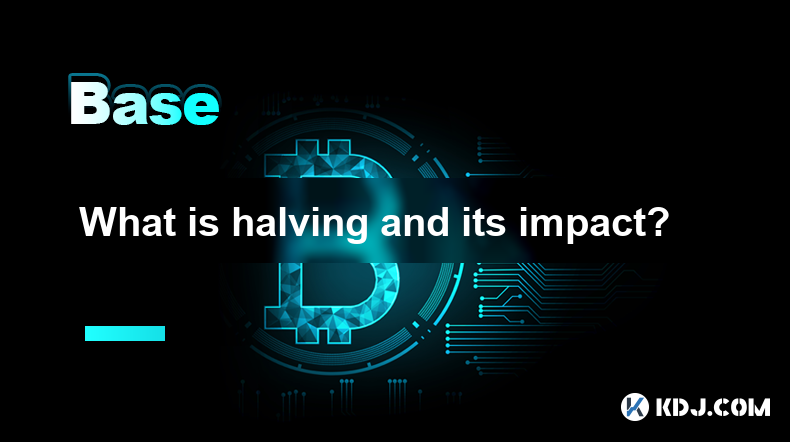
Halving is a significant event in the cryptocurrency world, particularly for Bitcoin and other cryptocurrencies that use a similar mechanism. Halving refers to the process by which the reward for mining new blocks is reduced by half. This event is programmed into the protocol of certain cryptocurrencies to control the rate at which new coins are generated and to mimic the scarcity of precious metals like gold.
The Mechanics of Halving
The concept of halving is straightforward but has profound implications. For Bitcoin, halving occurs approximately every four years, or every 210,000 blocks. When Bitcoin was first launched, the reward for mining a block was 50 BTC. After the first halving in 2012, this reward was reduced to 25 BTC. Subsequent halvings in 2016 and 2020 further reduced the reward to 12.5 BTC and 6.25 BTC, respectively. The next halving is expected to occur around 2024, reducing the reward to 3.125 BTC per block.
Impact on Miners
Halving directly affects miners, who are responsible for validating transactions and adding them to the blockchain. The reduction in block rewards means that miners receive fewer new bitcoins for their efforts. This can impact their profitability, especially if the price of Bitcoin does not increase sufficiently to offset the reduced rewards. Miners with higher operational costs may find it challenging to continue operating profitably, potentially leading to a decrease in the overall hash rate of the network.
Impact on Bitcoin's Supply
One of the primary purposes of halving is to control the supply of Bitcoin. By reducing the rate at which new bitcoins are created, halving helps to create a deflationary effect. Bitcoin has a maximum supply cap of 21 million coins, and halving ensures that this cap is approached gradually. This controlled supply can contribute to the perception of Bitcoin as a store of value, similar to gold.
Impact on Price
The impact of halving on Bitcoin's price is a topic of much debate and speculation. Historically, Bitcoin's price has experienced significant increases following halving events. This is often attributed to the reduced supply of new bitcoins entering the market, which, if demand remains constant or increases, can lead to higher prices. However, it's important to note that many factors influence Bitcoin's price, and halving is just one of them.
Market Sentiment and Speculation
Halving events often generate significant market sentiment and speculation. As the event approaches, traders and investors may anticipate price increases and adjust their strategies accordingly. This can lead to increased volatility in the market. Media coverage and discussions within the cryptocurrency community can further amplify these effects, creating a self-fulfilling prophecy where the anticipation of a price increase leads to actual price increases.
Long-Term Implications
The long-term implications of halving are closely tied to the overall adoption and acceptance of Bitcoin. As the reward for mining continues to decrease, the security of the network may depend more on transaction fees rather than block rewards. This shift could incentivize more users to use Bitcoin for transactions, thereby increasing its utility and value. Additionally, the continued reduction in new supply could reinforce Bitcoin's status as a digital asset with a finite supply, potentially attracting more institutional and long-term investors.
Halving in Other Cryptocurrencies
While Bitcoin is the most well-known cryptocurrency to implement halving, other cryptocurrencies have adopted similar mechanisms. For example, Litecoin, often referred to as the "silver to Bitcoin's gold," also undergoes halving events approximately every four years. The impact of halving on these cryptocurrencies can be similar to Bitcoin, with reduced block rewards affecting miners and potentially influencing price and market dynamics.
Technical Considerations for Miners
For miners, preparing for a halving event involves several technical considerations. Upgrading mining hardware to more efficient models can help offset the reduced rewards. Additionally, miners may need to adjust their operational strategies, such as optimizing energy consumption or seeking out cheaper electricity sources. Some miners may also choose to pool their resources with others to increase their chances of successfully mining blocks and sharing the rewards.
Frequently Asked Questions
Q: How does halving affect the overall security of the Bitcoin network?
A: Halving can impact the security of the Bitcoin network by affecting the profitability of mining. If the reduced block rewards lead to a significant number of miners leaving the network, the overall hash rate could decrease, potentially making the network more vulnerable to attacks. However, if the price of Bitcoin increases sufficiently to offset the reduced rewards, miners may continue to secure the network effectively.
Q: Can halving events be predicted with certainty?
A: Halving events can be predicted with a high degree of accuracy based on the number of blocks mined. Since the Bitcoin protocol is designed to produce a new block approximately every 10 minutes, the timing of halving events can be estimated. However, slight variations in block times can lead to small deviations in the actual date of the halving.
Q: Are there any cryptocurrencies that do not implement halving?
A: Yes, not all cryptocurrencies implement halving. For example, Ethereum, which uses a different consensus mechanism called Proof of Stake, does not have a halving mechanism. Instead, Ethereum's issuance of new coins is managed through a different set of rules that do not involve reducing block rewards over time.
Q: How do halving events affect the long-term viability of mining as a profession?
A: Halving events can make mining less profitable over time, especially if the price of the cryptocurrency does not increase sufficiently. This can lead to a consolidation of mining operations, where only the most efficient and well-capitalized miners remain profitable. As a result, mining as a profession may become more challenging for smaller operators, potentially affecting the decentralized nature of the network.
Disclaimer:info@kdj.com
The information provided is not trading advice. kdj.com does not assume any responsibility for any investments made based on the information provided in this article. Cryptocurrencies are highly volatile and it is highly recommended that you invest with caution after thorough research!
If you believe that the content used on this website infringes your copyright, please contact us immediately (info@kdj.com) and we will delete it promptly.
- Gold prices climb close to their all-time high levels as US President Trump's April 2-bound auto tariffs heightened global trade tensions.
- 2025-04-07 22:35:12
- BlockDAG (BDAG) Discussions Are Shifting Away from Charts and Moving Toward Results
- 2025-04-07 22:35:12
- Peter Brandt Predicts a 43% Drop for XRP if the Coin Fails to Stay Above $1.9
- 2025-04-07 22:30:12
- The Crypto Market is Entering a Delicate Phase, But The Last Dwarfs ($TLD) Presale Promises Huge Upside
- 2025-04-07 22:30:12
- Bitcoin, Ethereum, XRP, Solana, DOGE Price Plunge as US President Donald Trump's Global Tariff War Hits Cryptocurrencies
- 2025-04-07 22:25:12
- The leading cryptocurrency projects measured by Total Value Locked (TVL) growth during the week indicate an uptrend.
- 2025-04-07 22:25:12
Related knowledge
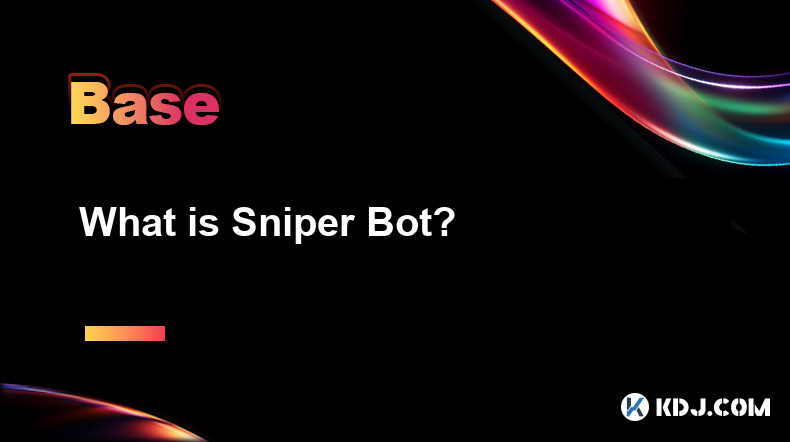
What is Sniper Bot?
Apr 07,2025 at 10:43pm
A Sniper Bot is a type of automated trading software used within the cryptocurrency market to execute trades at optimal times, often milliseconds before other traders. These bots are designed to take advantage of new token listings, price fluctuations, and other market opportunities to buy or sell assets quickly and efficiently. The primary goal of a Sn...

What is Mining Rig?
Apr 07,2025 at 11:08pm
A mining rig is a specialized computer system designed specifically for the purpose of mining cryptocurrencies. Mining, in the context of cryptocurrencies, refers to the process of solving complex mathematical problems to validate transactions and add them to the blockchain. This process requires significant computational power, and a mining rig is buil...
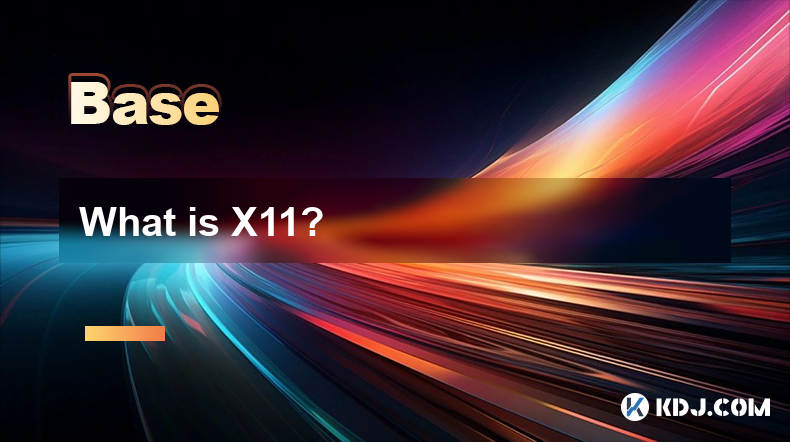
What is X11?
Apr 07,2025 at 09:22pm
What is X11? X11 is a cryptographic hash function used in various cryptocurrencies, most notably in the Dash cryptocurrency. It is designed to provide a high level of security and efficiency, making it a popular choice for blockchain networks. The X11 algorithm is unique because it uses a chain of 11 different hashing algorithms, which enhances its secu...
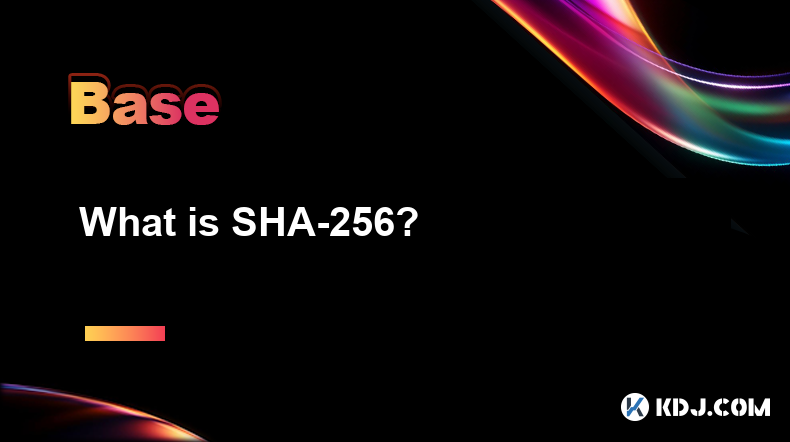
What is SHA-256?
Apr 07,2025 at 11:15pm
What is SHA-256?SHA-256, or Secure Hash Algorithm 256-bit, is a cryptographic hash function that is part of the SHA-2 family of hash functions. It is widely used in the cryptocurrency world, particularly in Bitcoin and other blockchain technologies, for securing data and ensuring the integrity of transactions. This article will delve into the specifics ...
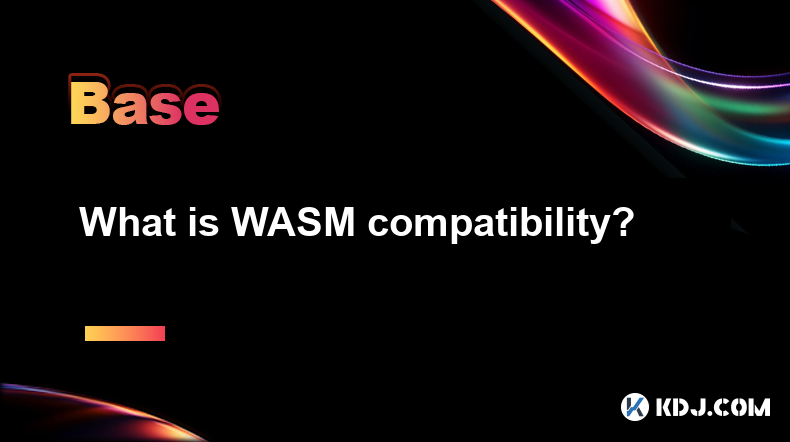
What is WASM compatibility?
Apr 07,2025 at 09:08pm
What is WASM Compatibility? WASM, or WebAssembly, is a binary instruction format for a stack-based virtual machine. It is designed to be a portable compilation target for programming languages, enabling deployment on the web for client and server applications. In the context of cryptocurrencies and blockchain technology, WASM compatibility refers to the...
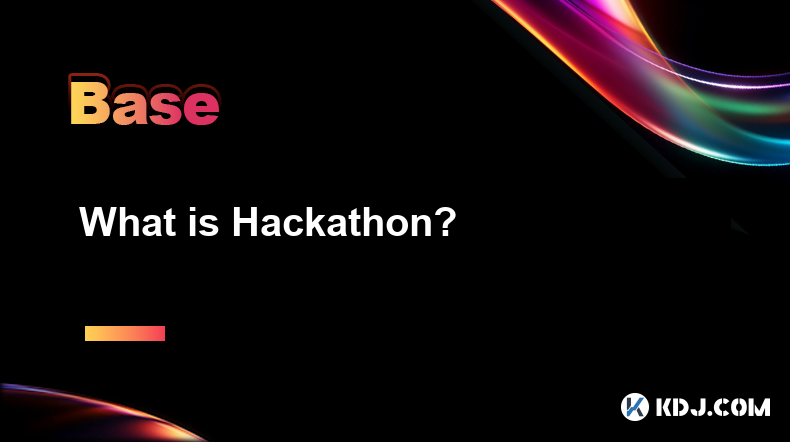
What is Hackathon?
Apr 07,2025 at 10:14pm
A Hackathon is an event where individuals or teams come together to collaborate intensively on software projects, often related to specific themes or challenges. In the context of the cryptocurrency circle, hackathons are frequently organized to foster innovation and development within the blockchain and crypto space. These events bring together develop...

What is Sniper Bot?
Apr 07,2025 at 10:43pm
A Sniper Bot is a type of automated trading software used within the cryptocurrency market to execute trades at optimal times, often milliseconds before other traders. These bots are designed to take advantage of new token listings, price fluctuations, and other market opportunities to buy or sell assets quickly and efficiently. The primary goal of a Sn...

What is Mining Rig?
Apr 07,2025 at 11:08pm
A mining rig is a specialized computer system designed specifically for the purpose of mining cryptocurrencies. Mining, in the context of cryptocurrencies, refers to the process of solving complex mathematical problems to validate transactions and add them to the blockchain. This process requires significant computational power, and a mining rig is buil...

What is X11?
Apr 07,2025 at 09:22pm
What is X11? X11 is a cryptographic hash function used in various cryptocurrencies, most notably in the Dash cryptocurrency. It is designed to provide a high level of security and efficiency, making it a popular choice for blockchain networks. The X11 algorithm is unique because it uses a chain of 11 different hashing algorithms, which enhances its secu...

What is SHA-256?
Apr 07,2025 at 11:15pm
What is SHA-256?SHA-256, or Secure Hash Algorithm 256-bit, is a cryptographic hash function that is part of the SHA-2 family of hash functions. It is widely used in the cryptocurrency world, particularly in Bitcoin and other blockchain technologies, for securing data and ensuring the integrity of transactions. This article will delve into the specifics ...

What is WASM compatibility?
Apr 07,2025 at 09:08pm
What is WASM Compatibility? WASM, or WebAssembly, is a binary instruction format for a stack-based virtual machine. It is designed to be a portable compilation target for programming languages, enabling deployment on the web for client and server applications. In the context of cryptocurrencies and blockchain technology, WASM compatibility refers to the...

What is Hackathon?
Apr 07,2025 at 10:14pm
A Hackathon is an event where individuals or teams come together to collaborate intensively on software projects, often related to specific themes or challenges. In the context of the cryptocurrency circle, hackathons are frequently organized to foster innovation and development within the blockchain and crypto space. These events bring together develop...
See all articles





















































































